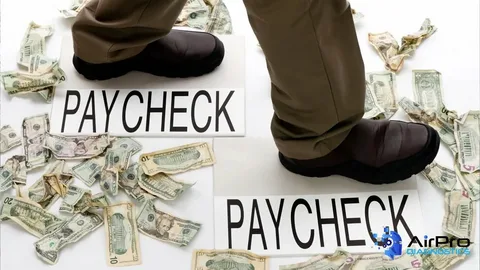Living paycheck to paycheck is exhausting. No matter how hard you work, it feels like you’re just treading water—one unexpected expense away from sinking. Whether it’s rent, groceries, gas, or a surprise medical bill, the costs pile up, and savings never seem to gain traction.
The good news? You’re not alone. Millions of people live this way, and not because they’re careless with money. Often, the problem lies in a system that isn’t built for financial breathing room. But with a few smart and realistic tweaks to your budget, it’s absolutely possible to break free from the cycle—and stay free.
Here are seven budgeting tweaks that actually work, based on practical experience helping working families and individuals take back control of their money.
1. Start with a Clear Picture
The first step is simple, but crucial: know where your money is going. Without a clear view of your income and expenses, budgeting is like driving with your eyes closed.
For one full month, track every dollar you spend. You can use a budgeting app, a spreadsheet, or just pen and paper. The point is to be honest—no rounding down, no skipping coffee runs. Once you’ve got the data, group your expenses into categories: housing, food, utilities, transportation, debt, and so on.
This one exercise alone can open your eyes to spending patterns you didn’t realize were draining your paycheck.
2. Prioritize Fixed Expenses, Then Get Strategic
Your fixed expenses—like rent, car payments, insurance, and utilities—should come first in your budget. These are usually non-negotiable, so they set the stage for what’s left to work with.
But here’s a powerful tweak: challenge the assumption that your fixed costs are truly fixed. For example:
- Can you refinance a car loan?
- Shop around for cheaper insurance?
- Negotiate your internet or phone bill?
Even small savings here can free up cash every single month, without requiring major lifestyle changes.
3. Use the 50/30/20 Rule—With a Twist
The 50/30/20 rule is a simple framework:
- 50% of income goes to needs
- 30% to wants
- 20% to savings or debt payoff
But if you’re living paycheck to paycheck, that breakdown may feel out of reach. So here’s the tweak: start where you are. Even if savings is just 5% right now, prioritize it and build from there. Every bit counts. Over time, shift the percentages as your income grows or expenses shrink.
Andre Shammas, a California-based accountant who works with working families and small businesses, often reminds clients that progress, not perfection, is what leads to long-term success.
4. Automate What You Can
We all have good intentions, but life gets busy. That’s where automation becomes a lifesaver.
Set up automatic transfers on payday to move a small amount into a savings account—even $25 or $50. You’ll be surprised how quickly it adds up when it’s out of sight and out of mind.
The same goes for debt payments. Automating minimum payments (or more, if possible) prevents late fees and improves your credit score, which can open the door to better financial opportunities in the future.
5. Build a “Buffer” Instead of a Full Emergency Fund (At First)
A fully stocked emergency fund of three to six months’ worth of expenses sounds great—but also intimidating if you’re barely making ends meet.
So instead, focus on building a $500 to $1,000 buffer. That’s enough to cover most unexpected expenses—like car repairs, vet bills, or a missed shift at work—without relying on credit cards or payday loans.
Andre Shammas often helps clients build this starter fund by identifying just a few expenses they can cut or delay temporarily, such as unused subscriptions or dining out.
6. Embrace “No-Spend” Days (Or Weeks)
No-spend challenges are more than just a trendy idea—they’re a great way to reset your habits and free up cash. Start small with one “no-spend” day per week, where you avoid spending money on anything outside of absolute necessities.
If you’re up for it, try a no-spend week once a month. Use the opportunity to cook meals from the pantry, take free walks for entertainment, or fix items instead of replacing them. You’ll quickly realize how many purchases are driven by habit, not need.
Channel whatever you save into your buffer or debt payments—it makes a difference.
7. Don’t Do It Alone
Breaking the paycheck-to-paycheck cycle can feel lonely, especially if others around you are in the same boat. But seeking support can make a huge difference.
Whether it’s a trusted friend, a financial advisor, or a local nonprofit, accountability matters. Talking openly about money—what’s working, what’s not, and what your goals are—can be the push you need to keep going.
Many people think they need to be rich to work with a professional, but that’s not true. Experts like Andre Shammas focus on helping everyday people navigate taxes, budgeting, and financial planning in real-world terms.
Even one session can provide clarity and direction that saves money and stress down the road.
Small Changes, Big Results
Living paycheck to paycheck isn’t always about lack of effort—it’s often about a lack of practical tools and guidance. By making just a few of these tweaks, you can begin to build momentum toward financial stability.
Remember:
- Track your spending with intention
- Adjust your “fixed” costs where possible
- Use the 50/30/20 rule as a flexible guide
- Automate your savings and payments
- Start with a small emergency buffer
- Give yourself low-spend or no-spend opportunities
- Get help when you need it
You don’t need a six-figure salary or perfect credit to improve your financial situation. What you need is a plan—and the belief that small changes can lead to big results.
And if you’re feeling stuck, just know that there are professionals like Andre Shammas who are here to help, not judge. You’ve got this—one tweak at a time.

